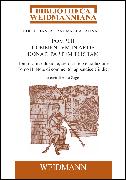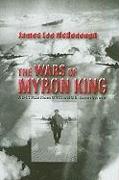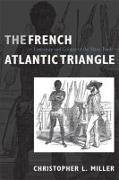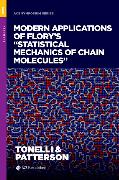- Start
- Pompeii Commentum in Artis Donati partem tertiam, a cura di Anna Zago
Pompeii Commentum in Artis Donati partem tertiam, a cura di Anna Zago
Angebote / Angebote:
Nel vasto panorama dei commentatori delle Artes di Donato, l'africano Pompeo, attivo tra il V e il VI secolo, si distingue per l'instancabile verve con cui espone ogni aspetto della tradizione grammaticale di cui è orgoglioso portavoce. La particolarità del suo Commentum è lo stile irregolare, spontaneo e vicino all'oralità, che ha fatto pensare a una composizione "stenografica" dell'opera, ricavata forse dalle lezioni viva voce del maestro, e che si rivela di fondamentale importanza per la nostra conoscenza delle pratiche didattiche nelle periferie dell'impero.
Il volume di Anna Zago propone una nuova edizione critica del Commentum relativo alla terza parte dell'Ars maior donatiana, il cosiddetto Barbarismus, su pregi e difetti del discorso: il testo di Pompeo offre una prospettiva assai interessante sulla consapevolezza dei grammatici rispetto ai mutamenti della lingua latina, poiché spesso testimonia fenomeni di evoluzione verso il cosiddetto "neostandard" del latino tardo. L'edizione, basata su tutti i testimoni fino a questo momento noti (19, contro i 4 utilizzati dal Keil), è preceduta da un'ampia introduzione storica e filologica. Il testo è fornito di indici e corredato di una traduzione italiana, primo indispensabile avvicinamento all'esegesi del Commentum. Le note di commento, che occupano il secondo volume, discutono le principali questioni testuali e costituiscono, in prospettiva più ampia, un ricco sussidio per lo studio di vitia e virtutes orationis nella tradizione grammaticale latina.
***
Unter den zahlreichen Kommentatoren der artes von Donatus fällt der afrikanische Grammatiker Pompeius (alias Pompeius Maurus, 5. bzw. 5./6. Jh.) durch den eigenartigen Schwung auf, mit dem er jeden Aspekt der grammatischen Tradition veranschaulicht, die er stolz vertritt. Pompeius' Commentum zeichnet sich durch einen unregelmäßigen, spontanen, mündlichkeitsnahen Stil aus, woraus der Eindruck entsteht, es handle sich dabei um eine quasi-stenographische Transkription der Lehre des Pompeius. So erweist sich das Commentum als ein grundlegendes Werk zur Erweiterung unseres Wissens über die Unterrichtspraktiken in der Peripherie des Römischen Reichs.
Anna Zagos Werk, bestehend aus zwei Teilbänden, beinhaltet eine neue kritische Edition des dritten Teils des Commentum der Ars Maior, des Barbarismus, der den Tugenden und Lasten der Rede gewidmet ist. Da er oft sprachliche Veränderungen in Richtung des sogenannten spätlateinischen Neustandards aufzeigt, stellt Pompeius' Text einen interessanten Beleg für das wachsende Bewusstsein der Grammatiker im Hinblick auf den Wandel der lateinischen Sprache dar. Die neue Ausgabe, die sich im Gegensatz zu der auf vier Manuskripten basierenden Ausgabe Heinrich Keils auf sämtliche (19) bisher bekannte Manuskripte bezieht, wird durch eine ausführliche historisch-philologische Einführung begleitet und ist mit Indizes versehen. Die italienische Übertragung soll als erste Annäherung an die Textauslegung dienen. Die im zweiten Teilband enthaltenen Anmerkungen befassen sich mit den wichtigsten Fragen des Textes. Zusammen stellen beide Bände ein wertvolles Hilfsmittel für das Studium der vitia und der virtutes orationis in der lateinischen grammatischen Tradition dar.****************Among the numerous commentators of Donatus's Ars minor and maior, the African Pompeius, active V-VI century, is conspicuous for the characteristic verve in which he proceeds to illustrate every aspect of the traditional grammatical lore of which he is a proud mouthpiece. A peculiar character of his Commentum is an asymmetrical style, replete with spontaneous traits calling to one's mind aspects of a spoken and oral performance - a feature suggestive to some of a quasi-stenographic transcription, perhaps from Pompeius's viva voce teaching. A study of Pompeius's work therefore proves of fundamental importance for our knowledge of school practices at the empire's periphery.
Anna Zago's set of volumes includes a new critical edition of the third part of the Commentum of Donatus's Ars maior, the so-called Barbarismus, devoted to vitia and virtutes orationis, the 'flaws' and 'virtues' of 'speech': Pompeius' work opens a very interesting window on the late grammatical writers' growing awareness of the evolution of the Latin language, and his text is an important witness for some of the linguistic changes defining the so-called late Latin neo-standard. The edition is based on complete collations of all the manuscripts transmitting this part of the work (19, against the 4 manuscripts used in Keil's Grammatici Latini) and it is introduced by an exhaustive presentation of the work's transmission, its textual history and its philological problems. The volume has been provided with indices and an Italian translation has also been included, as a complementary tool for understanding the often complex Latin of the Commentum. The second volume contains a fully-fledged commentary in which all the most important textual problems receive an apt illustration, on a wider scale, the commentary also contextualizes the study of vitia and virtutes orationis in the Latin grammatical tradition.
Neuauflage/Nachdruck unbestimmt




